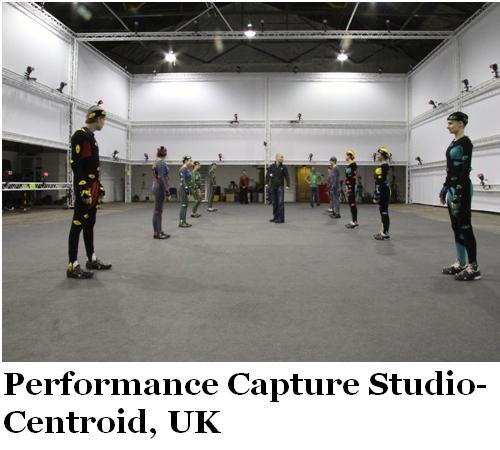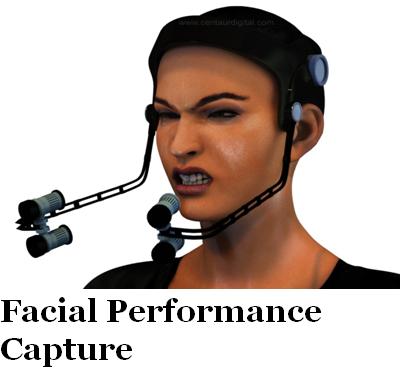 Performance capture is a word that is more synonymous nowadays with Hollywood blockbusters to many new media concepts. Stunning performances of characters in movies made us wonder how such extraordinary performances are delivered in CG. Performance capture as most of us known today is visualised by actors wearing tight lycra suit and lots of ping pong balls around them in a confined studio space. Well that is true in most scenarios and exceptions are there too. Look at the past, technology that saw many interesting milestones in the entertainment field.
Performance capture is a word that is more synonymous nowadays with Hollywood blockbusters to many new media concepts. Stunning performances of characters in movies made us wonder how such extraordinary performances are delivered in CG. Performance capture as most of us known today is visualised by actors wearing tight lycra suit and lots of ping pong balls around them in a confined studio space. Well that is true in most scenarios and exceptions are there too. Look at the past, technology that saw many interesting milestones in the entertainment field.
Evolution of motion capture took nearly two decades in the commercial entertainment industry from motion capture to a more matured performance capture today. In this life cycle span it tasted both success and failure in many projects. The evolution teached us a good lesson in what makes this so successful, then we realised it was the performance and not just beautifully looking CG characters.
 The debate of animation or performance capture is still going on but one thing that’s for sure is that if we want to recreate any human or human resemblance animation then performance capture is the best solution around. Since it merges the complex human body motion as well as the facial performance of the same actor at one go. This ensures the character is the person himself entirely played the performance and there is no separation from facial acting to the body motion. As James Cameron said once that in Avatar all the performances of the Navi characters were performed 100 per cent by actors. Performance capture is a full performance of the actor to reproduce his skills 100 per cent in different form. Of course animators will have their part in enhancing and smoothening out the actors’ performance data at the back end, it is like in a shot where costume of the actor and makeup are done by different departments to enhance the appeal of an actor.
The debate of animation or performance capture is still going on but one thing that’s for sure is that if we want to recreate any human or human resemblance animation then performance capture is the best solution around. Since it merges the complex human body motion as well as the facial performance of the same actor at one go. This ensures the character is the person himself entirely played the performance and there is no separation from facial acting to the body motion. As James Cameron said once that in Avatar all the performances of the Navi characters were performed 100 per cent by actors. Performance capture is a full performance of the actor to reproduce his skills 100 per cent in different form. Of course animators will have their part in enhancing and smoothening out the actors’ performance data at the back end, it is like in a shot where costume of the actor and makeup are done by different departments to enhance the appeal of an actor.
So who are the forerunners that shaped the industry to this stage? At this point we should mention that few directors like Hironobu Sakaguchi, Peter Jackson, RobertZemeckisetc who contributed for new benchmarks earlier. In fact Robert Zemeckis took this concept and ran a marathon till he even blurred the concept of live action movies. Because of them the industry is well matured enough to pave the way for future generations. Concept of motion capture technology is even considered skeptical by many in Hollywood because of the fact that it failed to prove the noteworthiness to them. Then the success of Lord of The Rings’s Gollum character broke all the myth about this technology. Audience were spellbound to see the performances of the character and the level of emotions that emoted. Then the gradual acceptance and experiments happened along the course of time.
Not only live action movies, many animation movies also adapted the motion capture and won Best Animated Feature at the Academy Awards in 2006 by Happy Feet. In fact more performance captured animated features started emerging in Hollywood and pushed the boundaries of realism in characters. Even Indian animation industry witnessed a few motion capture movies earlier and major breakthrough delivered by this year’s (2014) performance captured movie Kochadaiiyaan. It made a spectacular debut of realism for characters to show Indian audience the possibilities to embrace the technology. Only with this technology it made us possible to reproduce our favourite actor’s movements. Well Indian market is yet to harness the full capacity of performance capture and it is still fresh here.
One must say performance capture found its main stage in cinema because of technology improvements in CG as well as in motion capture. This is very evident from the recent movies like The Adventures of TinTin (Animation), Avatar, Dawn of the Planet of the Apes. If Tin Tin is for the favourite cartoon character on life like performance and then Avatar is for the visually beautiful environments and emotionally charging Navi characters. What all these movies had in common are incredible realism and outstanding performance of characters. So the technology has to support the art nature of acting which is highly a creative talent. This is well conceived and delivered by some of these movies.
Performance capture had an upswing after the Avatar movie and used widely in movies and by many video games. Avatar changed the perception what people already had about performance capture and believable characters. When the usage of performance capture is at the helm in Hollywood, there is also a market which is heavily depended on it, that was the video games market.Yes, we can’t imagine many popular AAA video games such as WWE, FIFA, Call of Duty, Halo, and Uncharted without motion capture. Well first motion captured game was Rise of the Robots in 1994 since then most RPG had this strategy to introduce their customers a new experience. It was very essential for some real life games such as sports games that represent real athlete. Example WWE games showcasing some special move of a wrestler, then his special moves are captured using motion capture. This really draws the fans of the athlete and engages in gameplay longer and more immersive way. Now modern AAA games broke the barriers of a motion capture partly due to technology improvements. Most games pushing the realism of their characters by using performance capture as a whole means of gaming experience.
Nowadays games not only depend merely by any motion, but engaging story driven games that brings more success to these titles. Here performance capture technology is a main source to produce compelling story. There are some innovative game genre evolved out of this and ideologies were broken. Heavy Rain and Beyond: Two Souls proved that drama/thriller interactive storytelling could be the new medium of modern day games.
This year’s title from Sledgehammer Games’s Call of Duty: Advanced Warfare pushed the boundaries of performance capture quality. With the state of the art next generation game engines that has a capability to produce photo realism at realtime and what is stopping them to use real actors? Now games use real life actors to perform their 3D game characters and deliver a powerful dialogue to drive the emotion of game play. Actors also finding it as a new avenue for showcase their talents irrespective of the appearance.
It is noteworthy to see most of this AAA games surpass top Hollywood box office collection. The Los Angeles Times in its report about Call of Duty: Black Ops II. That game had the single-day sales record, recording $500 million in its first 24 hours. “That game went on to reach $1 billion in sales in 15 days”.
Changing rules of conventional motion capture redefined performance capture technology. Recent movies of Planet of the Apes franchise stepped up the quality levels in performance capture as well as in realism. In Rise of the Planet of the Apes, first time huge outdoor volume of performance capture has been ever tried. This year’s Dawn of the Planet of the Apes touched the new grounds of realism by implementing water interactions with fur, large number of apes characters facial performance, outdoor with wet shooting conditions for performance capture is something never been attempted before. It shows new line of transformation happening in the way stories are conceived. Previously thought to be impossible are made possible today.
Most of these memorable characters have immense contributions of performance from the actor which is undeniable. One person that changed the modern day performance capture acting is Andy Serkis. He is the well know face behind most of the top performance capture movies. He pioneered the little nonsense of performance capture acting and calls this as the ‘digital makeup’ actor can step into any avatar without clamber into heavy makeup.
Recognition for his contribution to performance capture is still a long standing debate at Oscar nomination. But the strong hold supporters are rising this year for nomination. Even 20th Century Fox agrees to push hard for Serkis to get a best supporting actor nomination for his work on the film as Caesar. It’s also recommending rest of its cast for consideration, like Toby Kebbell for his mo-cap work as Koba.
Entertainment usage of performance capture doesn’t stop only with movies and games alone. Since the technology is more robust, now new media avenues have opened up. It gives the edge over approach to traditional methods. Example the traditional stage acting found its new avenue by using real time performance capture of an actor who plays, as a digital avatar on the live stage. Audience interactively narrate the story by watching it on stage and tweet from any location. Live events of music shows always try to introduce some craziest technologies to woo the audience use motion capture to create a digital avatar of their body motions. The characters will either perform side by side or controlled from behind screen. There are many innovative events like 3D wall projection and holographic techniques (Micheal Jackson event) combine performance capture in their projects to come with interesting ideas.
Performance capture will be a common consumer tool one day like any other gadgets. Ideas and innovations are still on the periphery to exploit the technology. Only thing that is stopping us now is imagination. Boundless opportunities out there for those who seeks exploration into technology; performance capture is a tool like any other instruments in the hands of expert and using it efficiently is up to us. So just what kind of capacity it takes to do good performance capture adventure? Carry a lot of enthusiasm and bold ideas to get ready for a great adventure!
(These are purely personal views of Centaurdigital.com founder Lino Stephen and AnimationXpress.com does not subscribe to these views)

